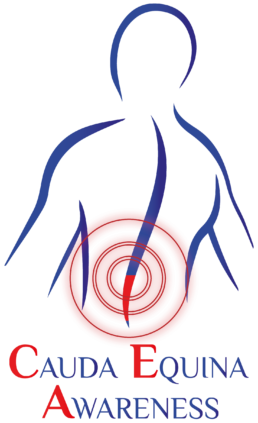Case Study D
D suffered Cauda Equina Syndrome due to a failure to transfer D to hospital by the ambulance service despite having “red flag” symptoms.
Background
D pulled her back on 19th July. She felt pain shooting down her right leg to her knee and she had difficulty moving. After a week she had not improved, so she attended her GP. She was diagnosed with acute sciatica and was prescribed pain killers.
D was advised to report to her GP if she developed “red flag” symptoms such as bladder and bowel incontinence and anal and lower limb numbness. On 1 September D was still in pain so her GP referred her to a physiotherapist. The physiotherapist was unable to offer assistance and D was then referred to see a spinal orthopaedic consultant on 28 October. The consultant found that D’s back movements were reduced by 20% of the normal range. D was told she had a nerve root trapped at L5/S1, which meant that there was reduced sensation/sensitivity in her leg. The consultant arranged an MRI scan of the lumbosacral spine and referred D to physiotherapy.
The MRI showed L5-S1 large central disc protrusion causing central canal narrowing and nerve impingement both S1 nerve roots. She had cauda epidural injections and was warned of “red flag” symptoms. She was referred to a consultant in pain management.
By mid-February D’s back and leg pain deteriorated. She saw the orthopaedic consultant again. He booked her for decompression and discectomy surgery on her spine. He warned D of “red flag” symptoms and advised her if she experienced any deterioration in her condition to seek medical review urgently. D was given a copy of the letter the consultant wrote to the GP.
On 30 March D’s condition had become unbearable. She was put on Morphine.
On 1 April D noticed that the nature of her pain had changed. It had spread from one leg to both legs and she had begun to feel numb in her vaginal and saddle regions.
D’s husband called the NHS Direct, explained her symptoms and history and within 45 minutes paramedics arrived at her home. D provided the paramedics with her history and her symptoms and showed them a copy of the consultant’s letter to the GP, to highlight the concerns about Cauda Equina Syndrome. The paramedics informed D that the letter was not for them but she should show it to her GP.
The paramedics did not examine her. They advised that as she was on high doses of analgesics already, they could not administer more pain relief. The paramedics concluded that transfer to an A & E Department was not required and recommended that D consult her GP as he would be able to alter her medication, refer her to a specialist or if necessary arrange direct admission to hospital. The paramedics then left, despite D’s requests to take her to hospital.
On 2 April at 12:08, D contacted NHS Direct again and this time an appointment was arranged for her to be seen at the Emergency Care Centre. She was examined but no investigations were arranged.
On Monday 5 April D contacted NHS Direct at 15:40 and D was advised to call an ambulance. An ambulance took D to the Emergency Department of Queens Medical Centre. By now her symptoms had progressed. There was pain extending to the entire length of her right leg and pain in the left leg extending to the knee. She had associated weakness and decreased mobility. D experienced urinary retention, passing small volumes of urine and also incontinence of urine on a number of occasions. D had 2-3 episodes of faecal incontinence. D had numbness in her “saddle” area but also hypersensitivity.
D was diagnosed with Cauda Equina Syndrome. She was referred for an MRI scan on 5 April under sedation and then she had decompression and discectomy surgery.
By 15 April D reported numbness in her lower limbs. A repeat MRI scan was requested which showed that she had a recurrent disc prolapse at L5/S1.
On 16 April D underwent a re-exploration discectomy decompression surgery at the L5/S1 level.
Following the revision surgery D was unable to mobilise independently, she developed headaches, she was left needing a catheter and was unable to open her bowels. She was discharged home on 19 April.
Outcome
Since being discharged from the hospital, D required crutches to mobilize. D lost sensation in her vaginal and saddle regions and was left with sexual dysfunction.
D suffers from uncontrollable flatulence. She requires an irrigation system to empty her bowel and she may require a colostomy as she gets older, D intermittently self-catheterises. D suffers from permanent severe pain in her legs, ankles and spasms in her legs and feet and experiences a pulling sensation in her buttocks. She suffers from muscle weakness and requires morphine for
pain relief.
D pursued a claim against the Defendant for failure to transfer her to hospital for investigation on 01 April. The Defendant conceded that there had been a failure to transfer her to hospital owing to the pain and numbness in her legs vagina and saddle region. The Defendant accepted that if she had been transferred to hospital, she would have had an MRI scan and compression of the cauda equina would have been noted. D would have proceeded to surgery within 24 hours and the bladder, bowel and sexual dysfunction would have been avoided. D achieved a 7 figure settlement.
